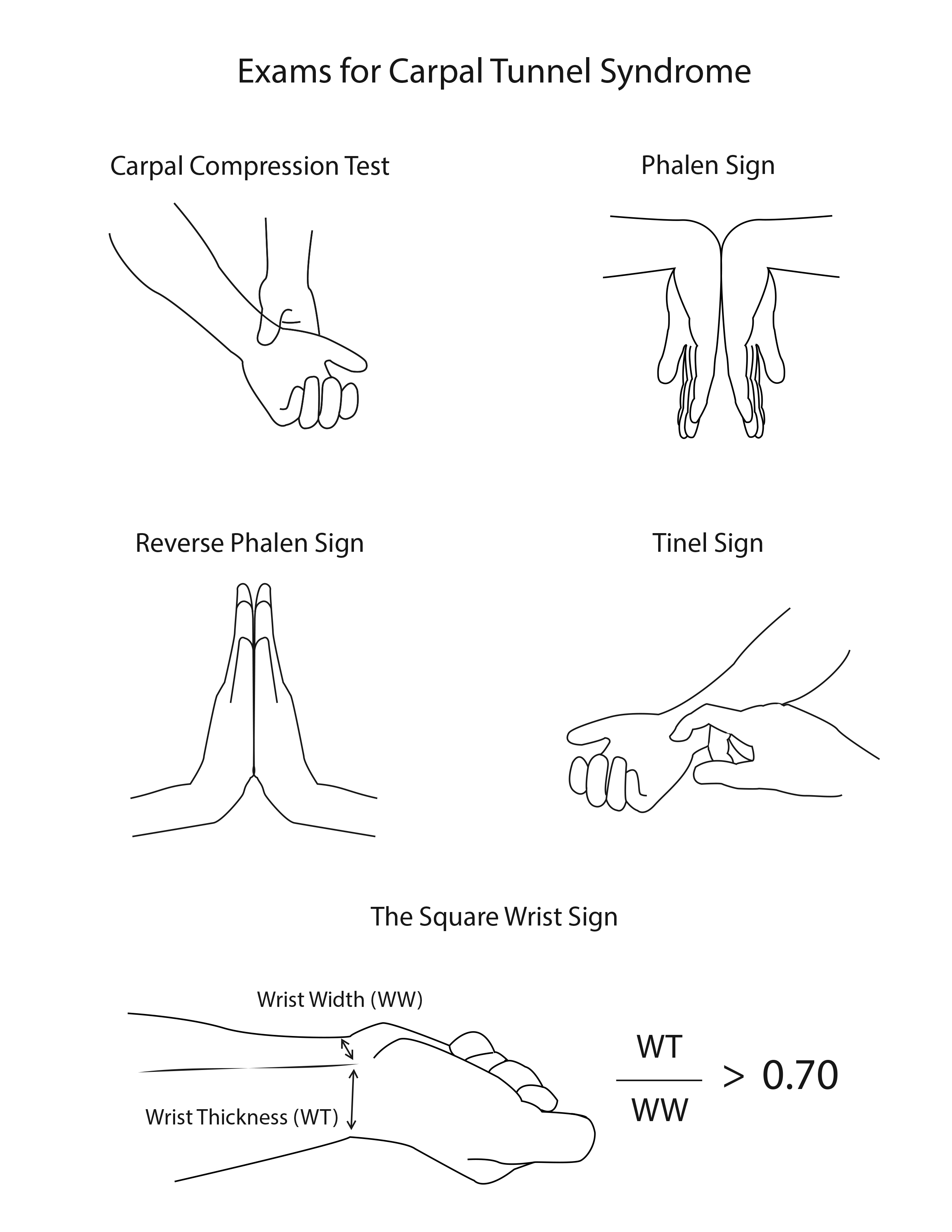[1]
Gillig JD,White SD,Rachel JN, Acute Carpal Tunnel Syndrome: A Review of Current Literature. The Orthopedic clinics of North America. 2016 Jul;
[PubMed PMID: 27241382]
[3]
Gelberman RH,Hergenroeder PT,Hargens AR,Lundborg GN,Akeson WH, The carpal tunnel syndrome. A study of carpal canal pressures. The Journal of bone and joint surgery. American volume. 1981 Mar;
[PubMed PMID: 7204435]
[4]
Solomon DH,Katz JN,Bohn R,Mogun H,Avorn J, Nonoccupational risk factors for carpal tunnel syndrome. Journal of general internal medicine. 1999 May;
[PubMed PMID: 10337041]
[6]
Padua L,Coraci D,Erra C,Pazzaglia C,Paolasso I,Loreti C,Caliandro P,Hobson-Webb LD, Carpal tunnel syndrome: clinical features, diagnosis, and management. The Lancet. Neurology. 2016 Nov;
[PubMed PMID: 27751557]
[7]
Sharma D,Jaggi AS,Bali A, Clinical evidence and mechanisms of growth factors in idiopathic and diabetes-induced carpal tunnel syndrome. European journal of pharmacology. 2018 Oct 15;
[PubMed PMID: 30125568]
[8]
Presazzi A,Bortolotto C,Zacchino M,Madonia L,Draghi F, Carpal tunnel: Normal anatomy, anatomical variants and ultrasound technique. Journal of ultrasound. 2011 Mar;
[PubMed PMID: 23396809]
[9]
Racasan O,Dubert T, The safest location for steroid injection in the treatment of carpal tunnel syndrome. Journal of hand surgery (Edinburgh, Scotland). 2005 Aug;
[PubMed PMID: 15950338]
[10]
Chen PC,Chuang CH,Tu YK,Bai CH,Chen CF,Liaw M, A Bayesian network meta-analysis: Comparing the clinical effectiveness of local corticosteroid injections using different treatment strategies for carpal tunnel syndrome. BMC musculoskeletal disorders. 2015 Nov 19;
[PubMed PMID: 26585378]
Level 1 (high-level) evidence
[11]
Wong SM,Griffith JF,Hui AC,Lo SK,Fu M,Wong KS, Carpal tunnel syndrome: diagnostic usefulness of sonography. Radiology. 2004 Jul;
[PubMed PMID: 15155897]
[12]
Oh S,Belohlavek M,Zhao C,Osamura N,Zobitz ME,An KN,Amadio PC, Detection of differential gliding characteristics of the flexor digitorum superficialis tendon and subsynovial connective tissue using color Doppler sonographic imaging. Journal of ultrasound in medicine : official journal of the American Institute of Ultrasound in Medicine. 2007 Feb;
[PubMed PMID: 17255175]
[13]
Green DP,MacKay BJ,Seiler SJ,Fry MT, Accuracy of Carpal Tunnel Injection: A Prospective Evaluation of 756 Patients. Hand (New York, N.Y.). 2020 Jan;
[PubMed PMID: 30003816]
[14]
Smith J,Wisniewski SJ,Finnoff JT,Payne JM, Sonographically guided carpal tunnel injections: the ulnar approach. Journal of ultrasound in medicine : official journal of the American Institute of Ultrasound in Medicine. 2008 Oct;
[PubMed PMID: 18809959]
[15]
Babaei-Ghazani A,Roomizadeh P,Forogh B,Moeini-Taba SM,Abedini A,Kadkhodaie M,Jahanjoo F,Eftekharsadat B, Ultrasound-Guided Versus Landmark-Guided Local Corticosteroid Injection for Carpal Tunnel Syndrome: A Systematic Review and Meta-Analysis of Randomized Controlled Trials. Archives of physical medicine and rehabilitation. 2018 Apr;
[PubMed PMID: 28943161]
Level 1 (high-level) evidence
[16]
Malahias MA,Chytas D,Mavrogenis AF,Nikolaou VS,Johnson EO,Babis GC, Platelet-rich plasma injections for carpal tunnel syndrome: a systematic and comprehensive review. European journal of orthopaedic surgery
[PubMed PMID: 30022241]
Level 1 (high-level) evidence
[18]
Keith MW,Masear V,Chung K,Maupin K,Andary M,Amadio PC,Barth RW,Watters WC 3rd,Goldberg MJ,Haralson RH 3rd,Turkelson CM,Wies JL, Diagnosis of carpal tunnel syndrome. The Journal of the American Academy of Orthopaedic Surgeons. 2009 Jun;
[PubMed PMID: 19474448]

